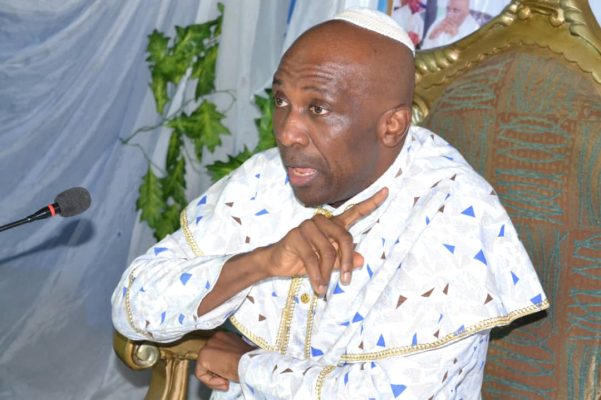“Health is Wealth” goes the popular saying. Over the last few months, the entire world has been thrown into bedlam over the infiltration of the “Corona Virus” code-named COVID-19.The virus which has flu-like symptoms was first detected by scientists in China in December 2019, and in the succeeding months, has spread like wildfire to places distant from China, including infiltrating the shores of our beloved Nigeria.
[ad]
This is not the first time our land has been ravaged by a pandemic or an epidemic. One thing Time has taught us is that history repeats itself.
The 1918 Influenza pandemic was one of the most deadly in world History. It was caused by an H1N1 virus with a gene of avian origin. It spread worldwide between 1918 and 1919.
The total number of deaths of the pandemic was at least 50 million worldwide. According to the Public Record Office London, the influenza hit Lagos on the 14th of September 1918, four years after the Amalgamation of the Northern and Southern Protectorates by Lord Fredrick Lugard.
[ad]
The spread in Lagos was fast and devastating such that in the first two months the causality figure was enormous – Lagos lost 1.5% of its 81,941 population.
Inhabitants around the seaports of Marina and Apapa, especially seamen working on ships docked on harbour ports were one of the first sets of people to be infected with this virus and from that point, it spread to the hinterland and majority of people on Lagos Island.
The Colonial government swung into action by creating different means of spreading information, educating people on how to best stay healthy during that period. House to house disinfection was also done to ensure the safety of people of Lagos.
Still, people from Lagos reportedly fled the infested town to other parts of the country. Since the train was the major means of transportation back then, it was a little shocking that in no time the virus spread to Abeokuta, Ibadan, Illorin, Bida, Jebba, Zaria, Kano, and Bauchi.
On October 14, 1918, the flu was detected in Onitsha, where a large number of people got infected and died due to the virulent nature of the virus, with insufficient health care to combat it. By December 1918, it had spread all over the country. Right from the first outbreak in Lagos, the colonial authorities worked hard to combat it, but for the migration of people from infected areas to other parts of Nigeria.
By mid-1919 the pandemic came to an end, as those who had been infected either died or developed immunity against the virus.
During the colonial times, some parts of Yoruba land and other places in the hinterland of the country witnessed plagues and outbreak of diseases which claimed hundreds of lives. People sought native medicine and other unorthodox means to cure these illnesses.
[ad]
One interesting case of an unorthodox approach to another epidemic, Smallpox, was the case of Dr. Oguntola Sapara Williams in Epe. Epe, a small town off the coast of Lagos, was hit by a smallpox epidemic in 1897.
The magnitude of the epidemic was so severe; the death toll was more than the community had ever recorded from any disease ever.
Dr Oguntola Sapara Williams, the first native appointed assistant surgeon was posted to Epe to help out with the people of the town. While at this posting at Epe, Sapara took the unorthodox step of joining the local smallpox cult with the motive of understanding their operations and eventually terminating their activities which he suspected was not helping the small community. This came about as a result of blackmailing the cult members who would take scrapings from skin rashes of actual smallpox cases and apply on the skin of uninfected persons.

In his words: “In 1897 when I took charge of Epe district, the town of Epe was known as the hotbed of the small-pox epidemic. Finding that vaccination and other precautions seemed to fail, I joined the cult and having got into the mysteries I summoned the small-pox priests together and threatened them with prosecution for disseminating the disease and used perchloride (sic) of mercury solutions. They left the town through disgust and since then, up till the time I left Epe, vaccination had scope for doing good work and then the town enjoyed immunity from smallpox, hitherto unknown”
One major aftermath of this situation was that the colonial government enacted the Witchcraft and Juju Ordinance in 1917 and made the worship of Sopona (the Yorùbá god of Smallpox) a crime punishable by fine and imprisonment.
Let’s not forget the widespread epidemic of leprosy in the entire stretch of Egba land between 1857 and 1859, this led to the establishment of the 1st Hospital in Nigeria by Reverend Father Coquard of the Catholic Church in Abeokuta. The hospital was the first set up as a world-class healthcare and research centre then. The Hospital is known as the “Sacred Heart Hospital” still stands today at Itesi in Abeokuta.
The smallpox crisis led to the establishment of medical research departments in Lagos where some of these vaccines were produced locally and also led to the establishment of the Infectious Disease Hospital in Lagos in 1899 and Abeokuta in 1923.
A key lesson that was learnt from these cases was that it is important to be extremely proactive in situations like this. Proper hygiene and adherence to government regulations are key. Closure of borders and restricting movement of people from affected areas to non-affected areas is crucial.
This is just a phase, and as Nigerian artiste “Veno Marioghae” aptly sang in her 1985 hit single: “Nigeria Go Survive.”
[ad unit=2]








